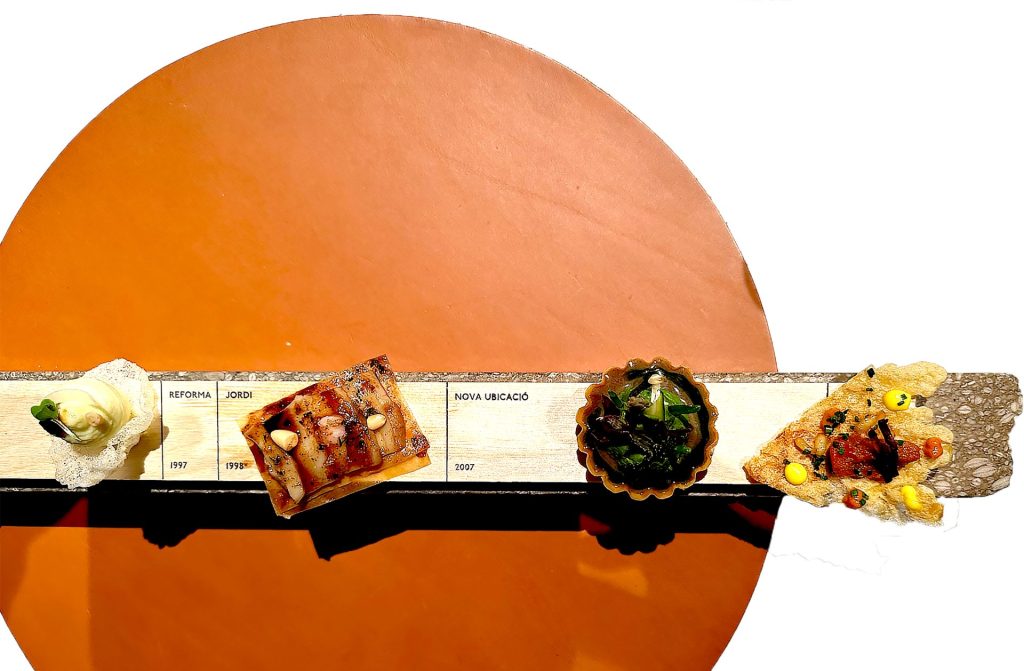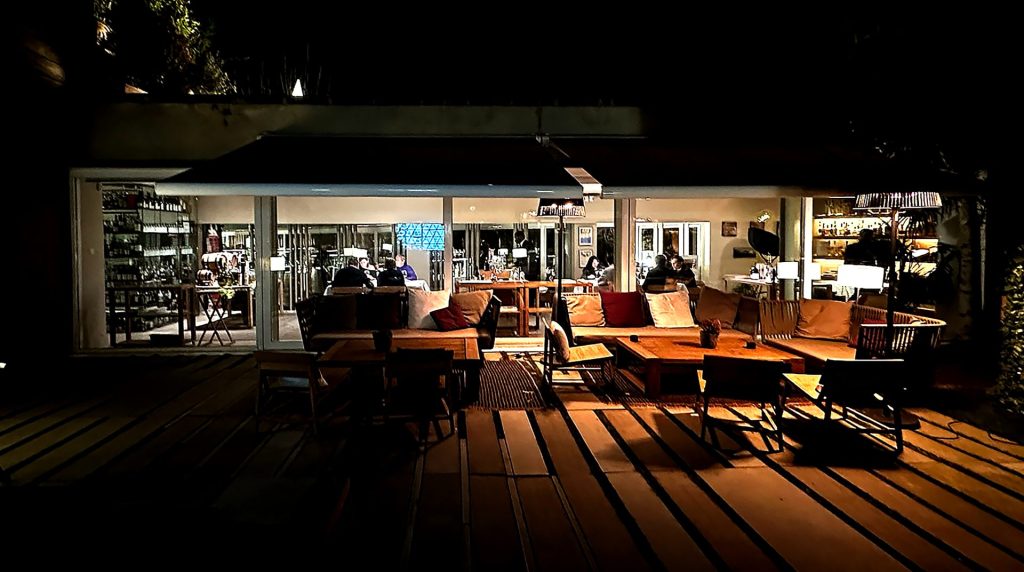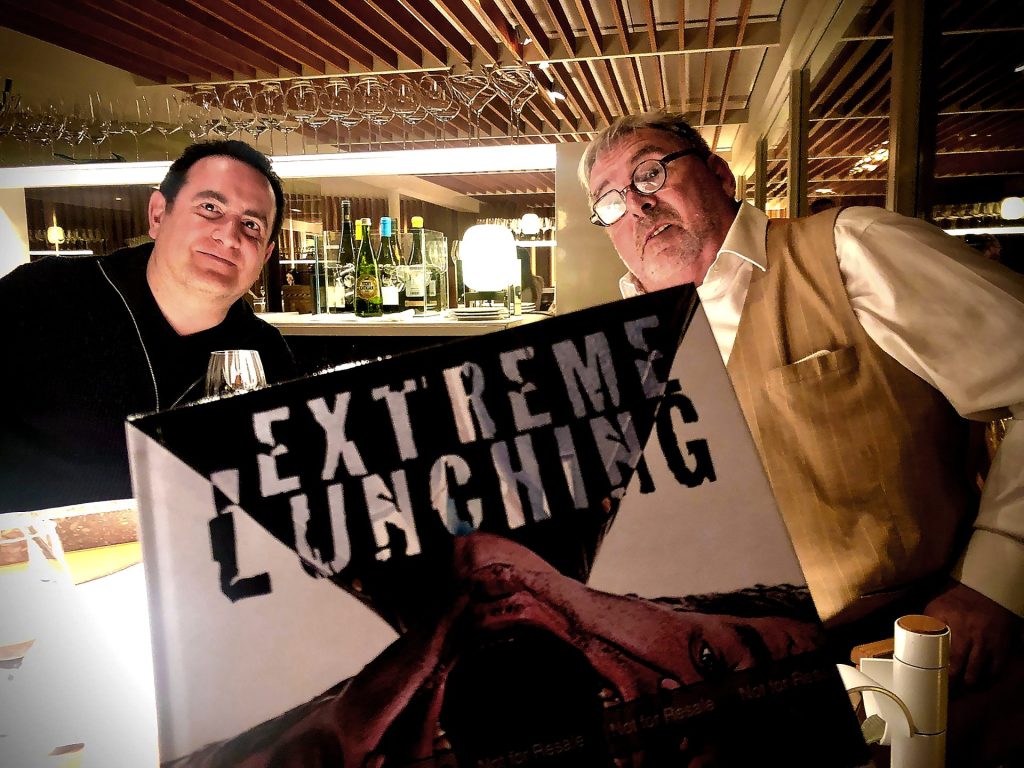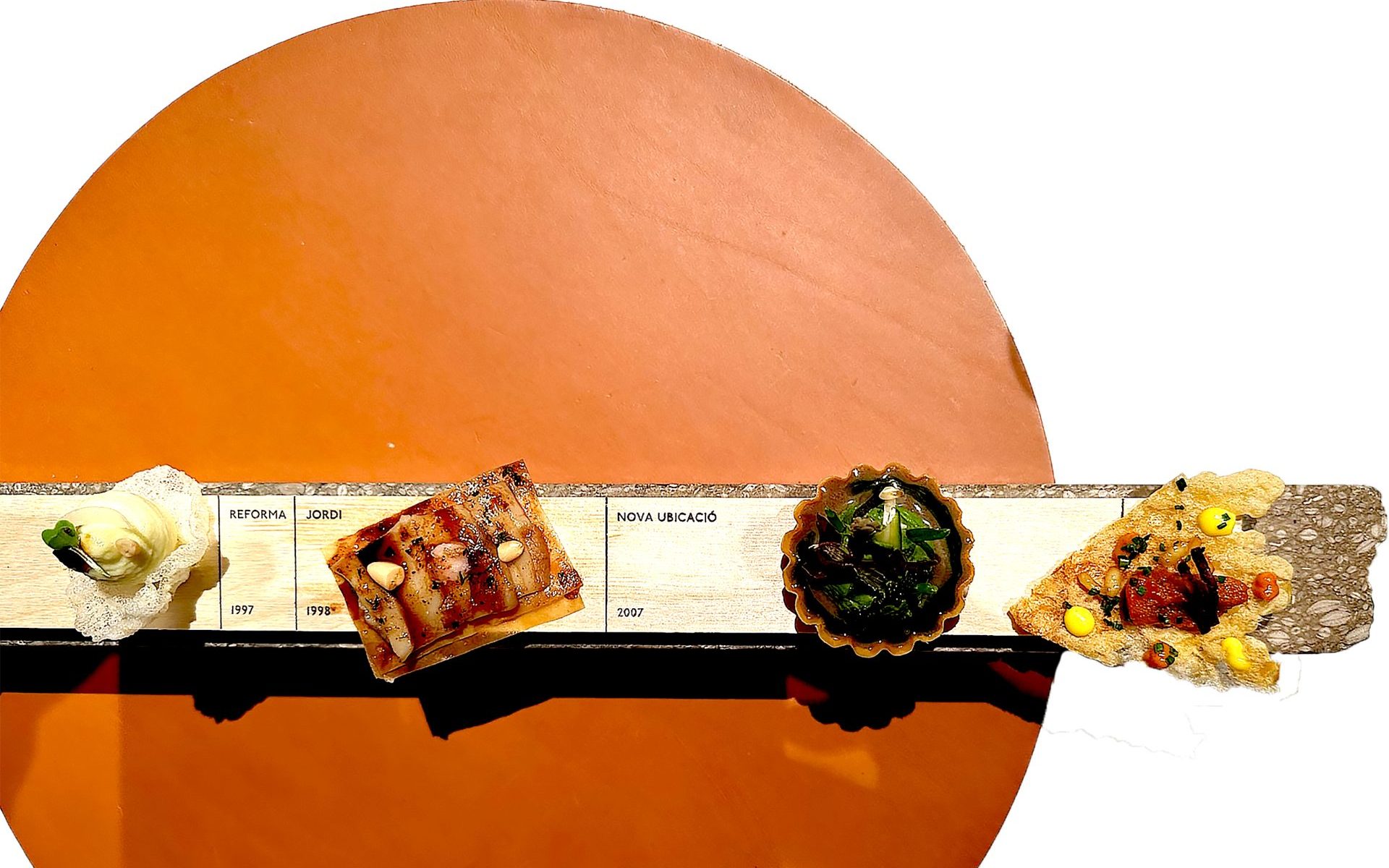
I have dined, actually mostly lunched, in some of the world’s finest but there was one name, until recently, that somehow eschewed me. I could say that it was at the top of my bucket list but that cliché always reminds me, especially in the context of restaurants, of Monty Python’s The Meaning of Life.
Mr. Creosote: “Better.”
Maître d’: “Better?”
Mr. Creosote: “Better get a bucket, I’m going to throw up.”
There was certainly no need for the bucket here but my mighty girth leapt in anticipation when I was invited to dine at El Celler de Can Roca in Girona. This legendary restaurant had been placed in the top three of the ‘Worlds Best Restaurants’ for a decade, topping the awards twice, before being fairly taken out of the running to sit amongst the Best of the Best. It was the last mountain I had to climb and I was heading for the summit.
Very much a family affair, the Celler is run by the three Roca brothers. Joan, is head chef, Josep the sommelier and Jordi, the youngest, the pastry chef. They grew up in their parents’ modest restaurant, Can Roca, There, in 1986, they started their own place in an adjoining building, relocating to the current venue 20 years later. The year after they were awarded their third Michelin star.

Mama & Papa’s original place is still there, just up the hill, but now with the addition of the brothers’ more formal old extension. I’ve been there a couple of times. Any weekday you can get a three course Menu del Dia of classic Catalan fare for about 15 euros with wine included and very decent it is too. You can eat in either half though I feel more at home with the old boys in the original. It’s where the food and family belong.
It is this family relationship and their upbringing within hospitality that is the backbone of what makes Celler de Can Roca so endearing. Their dedication and professionalism is unquestionable here but underlying this is a warmth that you don’t often find at this standard of dining. Many three star restaurants can be soulless, a temple where you are expected to worship at the pass. Yet for all its fame Can Roca has somewhat the qualities of your local family-run trattoria or rather bodega. On any night at least one brother is present, though we were lucky to meet all three, and you get the impression that they would rather not be anywhere else. This is their home and they have invited you in. They greet all the guests, warmly, seemingly honoured that you have come to them not, as with some celebrity chefs, the other way around. It was clear that some guests were regulars, possibly locals, just as I wish I was, yet nobody was treated with indifference.
At the same time these boys do not rest on their laurels; at times they are hands on, whites on or sleeves rolled up in the kitchen and at the pass, getting down with their team. It is their personal reputation that is coming out from there and it is never going to be anything less that perfect. Joan has an open plan office right next to the kitchen so he can see what is going on at all times. You get the feeling that he is first in, last out, every day.
The room itself compliments this intimacy. It seats about 50 but is divided up so your table is only ever one of a pair. In the centre lives a glassed in miniature forest of young plane trees, mirroring the neighbouring parks of Girona where these trees line the wide avenues and are exported to Barcelona and beyond. Upon each table sit three stones to represent the three brothers lest you forget.
And so to the food. Isn’t this what we came for? Well not exactly but let’s see.
Our charming waiter, Andrea, brings what is the menu as such, a massive detailed list of courses but the choice is simple. The long one or the even longer one. Guess who won?
I am yet again reminded of Mr Creosote: “I’ll have the lot”
Andrea’s response is on script. ” A wise choice.”
The next choice is again binary: to wine flight or not, I am rarely keen on this idea but after a short debate luckily sanity prevailed and a wise choice it was too. When you have one third of the ruling family, sommelier Josep, entirely responsible just for the wines it is going to be outstanding and this turned out to be the case, possibly, without underplaying the food, the highlight of the evening.
Can Roca has a cellar of about 50,00 bottles, quite modest when you consider that they get through about 22, 000 a year. Located in the basement it takes up, naturally, one third of the available floorspace. Remarkably they have built a factory opposite, Roca Recicla, that recycles the empties into glassware and the like.
We were given a list of wines as we were leaving. I think we had about 20 different tastes, modest in volume but not in length. More often than not a new one was presented before I had a chance to finish the previous one which was good going for an alcoholic like me. For the long stretch of the multiple amuse-bouche we were generously supplied with Albet i Noya Brut Cava. After that it got silly!
The highlight for me was a Jerez that they had laid down in 1986, exclusively for the restaurant, the year that the brothers had started. There have only ever been 60 bottles. One recently went at a charity wine auction for over 5K euros. We were, reasonably, only given a thimbleful but I brutally held on to my glass, deigning just to give it the occasional sniff for 30 minutes. I have now drunk with the gods and they are up for it.
Not all wines were so extravagant but all, individually, had been carefully considered for their quality and relevance to the food that they would accompany. I would readily return just for the wine if I thought it possible.
I estimate that, in the end, we used 60 glasses between the 3 of us over the course of 20 odd wines, each glass different but of a shape appropriate to the style of wine. Glad I wasn’t washing up although if I could work here, if only for a day, I’d scrub the loo floors. Someone must.
After Ferran Adrià, the brothers are considered some of the godfathers of contemporary Catalan cuisine. Partly responsible for the development of Molecular Gastronomy, Joan worked alongside the legendary culinary chemist, Hervé This, who coined the term.
The amuse-bouche, a few at a time, were explained in detail, without pretension, by Andrea including the year of creation. Here was a brief history of Can Roca in twelve tiny taste-bombs, each a explosion of joy to the palette, each one bringing its own individuality while complimenting its partners, though there was a dominance of truffle throughout. Not the chemical taste of truffle oil used by chefs on every bowl of squash soup the world over. These were undoubtedly fresh winter black truffles to be found buried beneath the base of oak trees, hunted by dogs or pigs around the forests of Catalonia in the first few months of the year. Just the aroma of truffles can take the lowliest item to new heights though an oyster here did seem lost beneath it.
The first five main courses were a remarkable demonstration that fine dining doesn’t necessarily need fish, foul nor flesh to create deep, complex flavours, although the ingredients of some outnumbered many a whole menu elsewhere. Peas, steamed at the table in a wine of Xarel·lo, Catalonia’s dominant native grape, with which it was served, led the way.
Calçots, Catalonia’s unique forced onion, with razor clams smoothed the transition to the seafood dishes. A change of gear on the wine front to red heralded first game, by way of partridge, then “Remats de Foc”, lamb three ways. Albert returned to carve their signature Poularde Brioche at the table.

While each dish throughout is presented in an individual way with custom-made place settings and tableware Can Roca utilises far less showmanship in the dining room than some other restaurants of this fame. I am sure they consider, quite rightly, that the quality of the fare can speak for itself. The grand theatrics are left to the last in the deserts with the Zen-like “It Rains in the Forest”, another tribute to the local parks perhaps. A cloud of bubbles, spewing forth from a spout, is gathered up by Andea, and tossed in the air to be hung above a steel bowl where it rains down on the rest of the dish. Not half as spectacular as Heston Blumenthal’s liquid nitrogen Ice cream machine but a clever piece of theatre nonetheless.
As a finale, in a tribute to the traditional dessert trolleys of grand hotel restaurants of yesteryear, a cart is wheeled up, laden with chocolate treats, though looking more like old-fashioned seaside ice cream stall. These playfull touches are likely to be from Jordi, the youngest of the brothers, whose province is pastry and sweets, the Willy Wonka of the family.
With these the sommelier dispenses a Mosel Riesling from Joh. Jos. Prüm, and Oremus Tokaji Aszú 3 Puttonyos 2016 (why not the 5 point, you may ask, but who would question the judgement of one of the world’s greatest sommeliers)
For the last few years Can Roca, in particular Josep, has been distilling their own booze and making their own liquors under the Esperit Roca name. Their own Vermut de Carxofa (artichoke) had already been served with the artichoke rosette. To round off the desserts and, in fact the dinner, they presented Esperit Roca Licor de Cacau. It was complex and luscious without being overbearing. Dani immediately ordered the last three bottles in stock to take home. Who wouldn’t?
In the end what, or rather who, makes this place so outstanding, so at the top of the game, is the collaboration of the brothers, their clear understanding of what fine dining really means and their obvious love of the game. The word is hospitality, that is what they grew up with, that is what they understand best, that is what they do better that anyone else in the world. It is, simply, put the World’s Best Restaurant.
As we left Josep was waiting at reception and graciously thanked us for coming.
“I do hope to see you again soon”
I do hope so too, Josep.

El Cellar de Can Roca
Carrer de Can Sunyer, 48, 17007 Girona
www.cellercanroca.com
